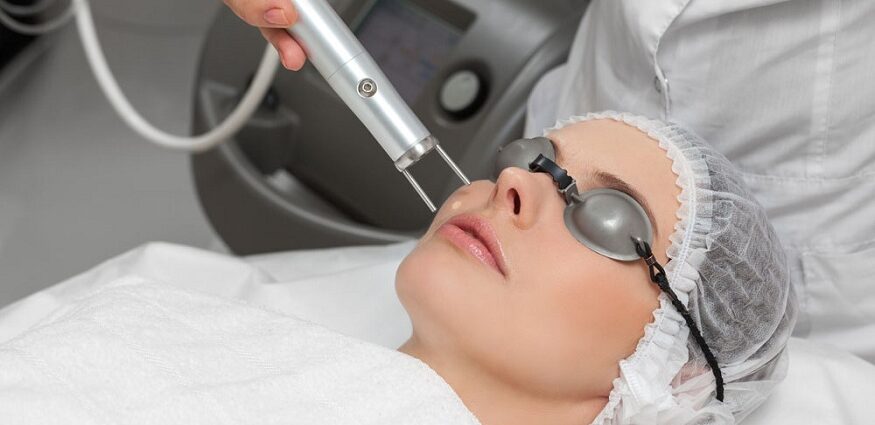Introduction
Picosecond lasers have become a potent instrument with many uses in the constantly changing technological scene. Medical treatments, precise machining, scientific research, and other fields have all been transformed by the extraordinary qualities of 皮秒 lasers. This article will explore the specifics of picosecond laser technology, as well as its applications and impacts in various industries.
Understanding Picosecond Laser Technology
How Does a Picosecond Laser Work?
At the heart of a picosecond laser lies a gain medium, typically a solid-state crystal or a fiber doped with rare-earth ions. When stimulated by an external energy source, such as a flash lamp or diode laser, the gain medium undergoes stimulated emission, releasing photons in the form of laser light. The pulse duration is determined by the properties of the gain medium and the laser cavity design.
Advantages of Picosecond Laser Technology
Picosecond lasers offer several advantages over other laser technologies. Firstly, their ultra-short pulse duration allows for precise material processing without significant heat transfer to the surrounding areas, minimizing thermal damage. Additionally, the high peak power of 皮秒激光 enables efficient ablation and cutting processes. Moreover, their versatility and ability to operate at different wavelengths make them suitable for various applications.
Applications of Picosecond Lasers
Medical and Dermatological Applications
Picosecond lasers have transformed the field of dermatology and medical aesthetics. They are used for tattoo removal, pigmented lesion treatment, scar revision, and skin rejuvenation. With their ability to selectively target specific chromophores in the skin, picosecond lasers deliver impressive results with minimal downtime and reduced risk of side effects.
Industrial and Manufacturing Applications
In the industrial and manufacturing sector, picosecond lasers find application in precision machining, micromachining, and material processing. Their short pulse duration enables highly accurate and controlled material removal, allowing for the fabrication of intricate components and structures. From electronics manufacturing to aerospace industries, picosecond lasers play a pivotal role in achieving the desired precision and quality.
Scientific Research and Microscopy
In the realm of scientific research, picosecond lasers serve as invaluable tools for imaging, spectroscopy, and ultrafast dynamics studies. Their short pulse duration enables high temporal resolution, making them ideal for investigating ultrafast phenomena and capturing transient events. Picosecond lasers also find application in microscopy techniques such as multiphoton imaging, enabling researchers to explore biological samples with enhanced clarity and precision.
Picosecond Laser in Tattoo Removal
The Evolution of Tattoo Removal Techniques
Tattoo removal has evolved significantly over the years, from crude methods to sophisticated techniques. Early approaches such as dermabrasion and salabrasion were invasive and often resulted in scarring. The advent of Q-switched nanosecond lasers improved the process, but limitations remained.
How Picosecond Lasers Revolutionized Tattoo Removal
Picosecond lasers have revolutionized tattoo removal by delivering shorter pulses that result in enhanced fragmentation of tattoo pigments. Compared to nanosecond lasers, picosecond lasers create more photoacoustic effects, shattering the pigments into finer particles that are easily eliminated by the body’s immune system. This leads to faster and more effective tattoo clearance, even for complex and multicolored tattoos.
Benefits and Limitations of Picosecond Lasers for Tattoo Removal
Picosecond lasers offer several benefits for tattoo removal procedures. They provide better clearance of stubborn pigments, reduce the number of treatment sessions required, and minimize the risk of adverse side effects such as scarring and hypopigmentation. However, it’s important to note that not all tattoo pigments respond equally to picosecond laser treatment, and certain colors may require additional sessions or alternative approaches.
Picosecond Laser in Precision Machining
Enhanced Precision and Efficiency
In precision machining, picosecond lasers offer unparalleled precision and efficiency. The ultra-short pulse duration allows for minimal heat transfer to the surrounding material, reducing the risk of thermal damage. This enables the fabrication of intricate structures and components with high accuracy, making picosecond lasers indispensable in industries that require microfabrication and complex machining processes.
Micromachining and Material Processing
Picosecond lasers excel in micromachining applications, where small features and high aspect ratios are crucial. They can accurately ablate and drill tiny holes, produce intricate patterns, and achieve precise surface texturing. Moreover, picosecond lasers are effective in material processing tasks such as thin film removal, selective material ablation, and high-resolution marking.
Picosecond Lasers in Scientific Research
Imaging and Spectroscopy
In scientific research, picosecond lasers find extensive use in imaging and spectroscopy techniques. They enable high-resolution imaging by delivering ultrashort pulses that minimize photobleaching and photodamage to samples. Picosecond lasers are also essential for various spectroscopic methods, including time-resolved spectroscopy, fluorescence lifetime imaging, and pump-probe experiments.
Ultrafast Dynamics Studies
The ultrafast pulse duration of picosecond lasers allows researchers to investigate ultrafast dynamics in a wide range of scientific disciplines. Whether studying chemical reactions, electron dynamics, or biomolecular processes, picosecond lasers provide the temporal resolution necessary to capture and understand these rapid phenomena.
Applications in Optoelectronics and Photonics
Picosecond lasers play a critical role in the development of optoelectronic and photonic devices. They facilitate the characterization and testing of optical components, help in the fabrication of photonic circuits, and enable the investigation of light-matter interactions. Picosecond lasers are instrumental in advancing technologies such as ultrafast optics, fiber optics, and laser-based communications.
Future Prospects and Emerging Trends
Advancements in Picosecond Laser Technology
As technology continues to progress, picosecond lasers are expected to undergo further advancements. Researchers and engineers are working on improving laser performance, increasing pulse energy, and developing novel laser designs. These advancements will enhance the capabilities of picosecond lasers, opening up new possibilities in various fields.
Integration with Other Technologies
The integration of picosecond lasers with other technologies is an area of growing interest. Combining picosecond lasers with imaging systems, robotics, and artificial intelligence can lead to synergistic applications and improved automation. Such integration will enhance the precision, speed, and efficiency of processes in industries ranging from manufacturing to medical fields.
Potential Applications in Various Industries
The versatility of picosecond lasers makes them suitable for a wide range of industries. Their potential applications extend to fields such as renewable energy, telecommunications, materials science, and environmental monitoring. As the technology becomes more accessible and cost-effective, the adoption of picosecond lasers in these industries is expected to increase.
Conclusion
Picosecond laser technology has ushered in a new era of precision, efficiency, and versatility in various fields. From medical aesthetics to scientific research and industrial manufacturing, picosecond lasers have proven their effectiveness in delivering exceptional results. As advancements continue, we can expect picosecond lasers to play an increasingly vital role in shaping the future of technology and innovation.

